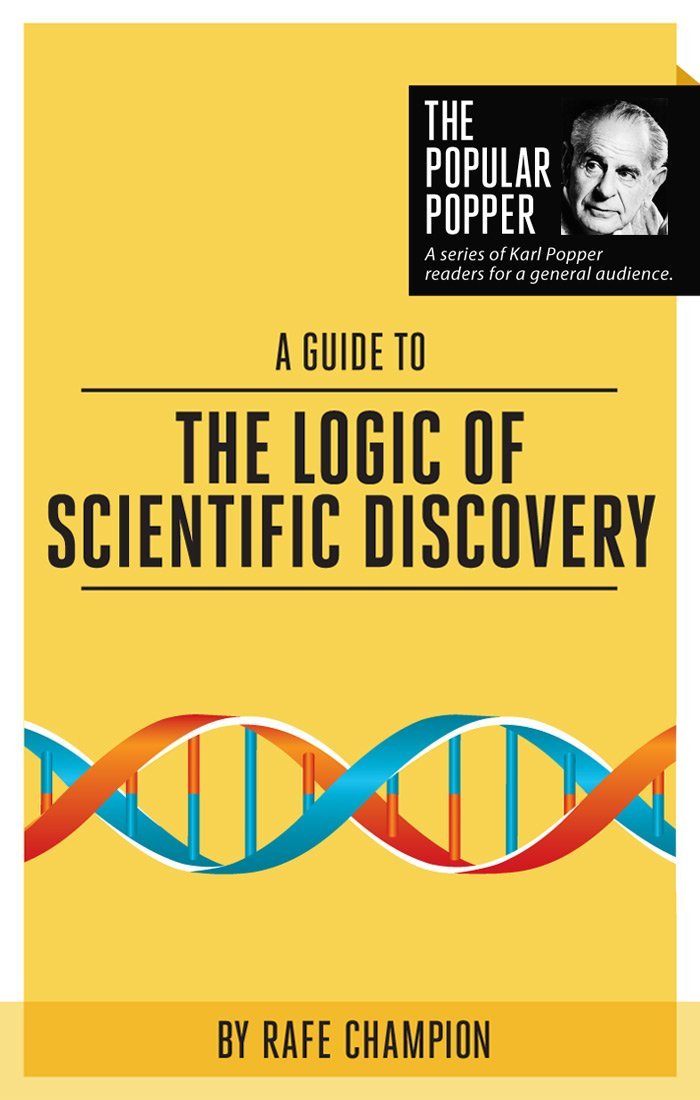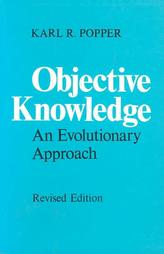The five Guides have been revised and when the new versions are on line I will advise Amazon so they can offer previous buyers the opportunity to update.
Preface to The Guide to The Logic of Scientific Discovery
In this revised edition there is discussion of six Popperian “themes” in place of the six “turns” in the first edition because some readers thought that these represented changes in Popper’s thinking. In fact from his first publications in 1934/5 Popper turned away from the traditional concerns with the justification of beliefs, subjective knowledge and the analysis of concepts. He also rehabilitated philosophy and metaphysics which were rendered meaningless by the standards of the Vienna circle and the logical positivists at the time.
Many angles could be adopted to provide a guide to Popper’s though. In his own words “It so happens that the real linchpin of my thought about human knowledge is fallibillism and the critical approach” (1983, xxxv). In his lectures and the series of papers in the 1960s that became Objective Knowledge problem-solving is a central motif spelled out in the four-stage schema to demonstrate the all-important process of testing and critical appraisal which leads to the emergence of deeper problems which are the growing points of science. He always emphasised the importance of the historical approach and that leads to “situational analysis” which is equally helpful to explore scientific or intellectual problems and the explanation of human action and events in the social sciences.
There are two reasons to highlight the six themes. The first is to help students to get their bearings in Popper’s books because they may feel “lost” due to the lack of familiar “landmarks” such as of justificationism, subjectivism and conceptual analysis. His work can be seen as a program to explore the results when old problems are reformulated and addressed in new ways. Agassi provided a hint to this process with his paper on the novelty of Popper’s philosophy of science (Agassi, 1968) where he described how major advances can be achieved when a “known but unappreciated solution to a given problem” is take seriously and the implications of the solution are unpacked.
One way to evaluate Popper’s achievement is to assess the progress that he made, given his own intentions and aspirations. Critics who understand the program of critical rationalism can then do a “compare and contrast” exercise and make informed decisions about the direction to take their own research programs. If they decide to reject all or part of the Popperian program that will be a rational choice, with reasons that can be discussed and subjected to criticism.
The second reason to describe the themes is to identify some shared concerns with other intellectual traditions and work in progress. Four of these are: (1) the fallibillism of C S Peirce and John Dewey, and currently Kitcher (2012), (2) the focus on ignorance (what we do not know) of Firestein (2012) and Schulz (2010), (3) examination of the social and institutional context of science by (Goldman, Kitcher) and (4) the various ways that research programs have been discussed by others, for example Lovejoy’s historical study of key ideas, Collingwood’s alertness to metaphysical theories and more recently Kitcher’s concepts of “scientific practice” and “schemata” and Barry Smith’s work on the Austrian/Aristotelian metaphysical.
New material
The Appendix on The Progress of Popper contains additional commentary on the three volumes of the Postscript to The Logic of Scientific Discovery including summary statements about three interesting additions to the second volume The Open Universe.
These are “An Afterword” and two important addenda. “Indeterminism is not enough: An afterword” originally appeared in the monthly magazine Encounter in April 1973. It was the first introduction for the educated public to Popper’s new line of evolutionary thinking and the “three world” theory which he presented in a series of conference papers during the 1960s.
The first addendum “Scientific reduction and the essential incompleteness of all science” is a rejoinder to all the over-optimistic scientists who have ever proclaimed that the “end of the road” is near, that science (usually physics) is on the verge of delivering The Final Theory About Everything. He pointed out that Godel’s incompleteness theorem of formal arithmetic provides a formal demolition of the “end of the road” aspiration, although he regarded that as “heavy argument against a comparatively weak position”. Popper’s world (of propensities) is a world of emergent evolution, emergent novelty, where problems may be solved but in the process deeper problems appear.
Nevertheless, the method of attempting reductions is most fruitful, not only because we learn a great deal by its partial successes, by partial reductions, but also because we learn from our partial failures, from the new problems which our failures reveal. (162)
The second addendum “Further remarks on reduction, 1981” begins with a fascinating account of the discovery of many new elements, starting with element 72, as a result of Bohr’s quantum theory of the periodic system of elements. This looked like an epic achievement in reducing chemistry to physics because the theory led to the discovery of new elements, and more than that, it led to the prediction of some of their optical properties and some properties of their chemical compounds. “It was a great moment in the history of matter. We felt, rightly, this was it: Bohr had hit rock bottom.” (164)
But soon the dream of reduction was dashed due to work by Soddy (1910), Thomson (1913), Aston (1919).
And then came Urey’s bombshell, the discovery of heavy water, which meant that all the basic measurements of chemistry, the measurement of the atomic weights, were slightly wrong and had to be revised. Thus the rock bottom suddenly gave way: somehow Niels Bohr had built on a morass. But his edifice still stood. (165)
The addendum finished with a reference to Prigogine ‘s (1980) work on thermodynamics which explored the way that open systems can defy the usual understanding of the law of increasing disorder in the universe, due to the increase of entropy. It seems that some systems can export entropy into their environment and increase rather than decrease their internal order.
Prigogine’s work may be looked upon as a piece of exciting physicalist reduction, at least in the sense that it takes the first steps towards a physical understanding of the evolution of higher structures, which seems to be a fairly obvious aspect of the evolution of life on earth. It may thus open the way to understanding the reason why the creativeness of life does not contradict the laws of physics. (174)
An additional appendix indicates how Jarvie identified the institutional theme in Popper’s work, another takes up the institutional theme with an examples from his political philosophy and another indicates the wide-ranging program that he was pursuing during the 1950s in addition to translating Logik der Forschung and writing The Postscript to The Logic of Scientific Discovery (listed as an Appendix to Chapter 1 in Conjectures).
In the Guide to the Poverty the The Window of Opportunity – the parallel work of Parsons, von Mises and Popper is now an appendix instead of a part of the text of the guide.
No special changes in C&R apart from the turn from turns to themes and inclusion of the additional appendix on Jarvie and his book The Republic of Science (standard in all the guides).
In the guide on Objective Knowledge there are the standard changes and also elimination of a lot of repetition in the supplementary material.
Minor mistakes keep turning up, especially when new material is added or passages are revised to be more readable.
Comments and criticism are welcome, at least in principle:) and the process of revision and improvement will never be complete.
NEXT STEPS
A collection of my papers on the work of Bill Bartley.
Back to work on “Misreading Popper” which is well advanced and will be done by Christmas, another task that could go on for ever but it will be brought to a close to keep the book under 50,000 words.






